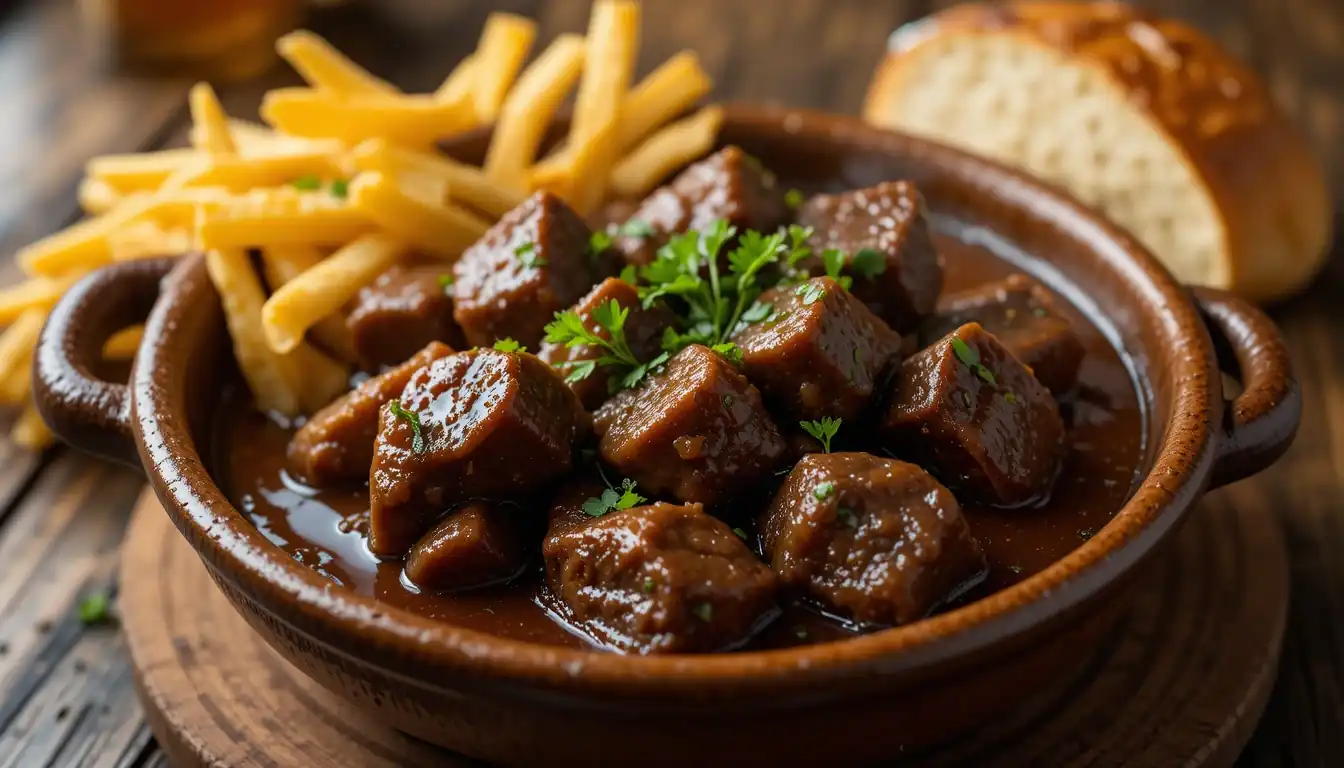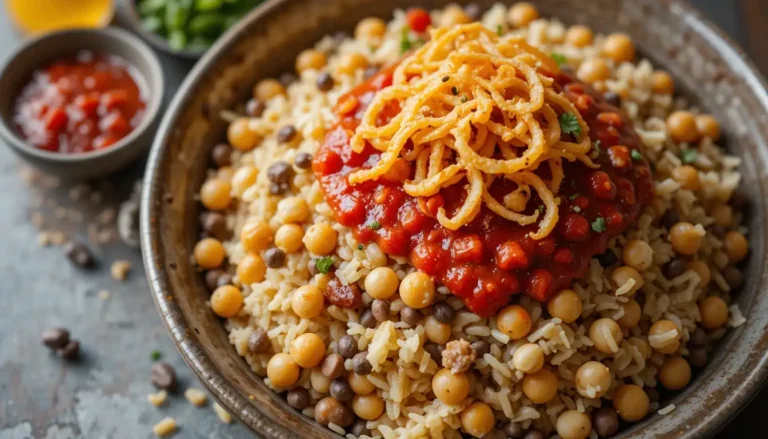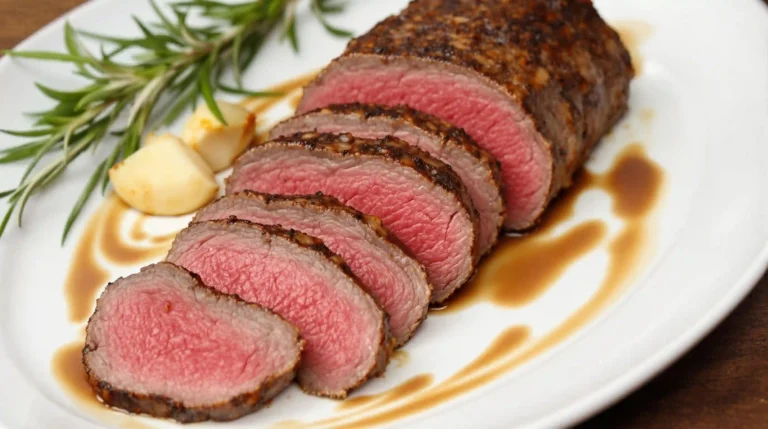Delicious Carbonade Flamande: Foolproof Guide
Hello food lovers! Today, we’re taking a culinary trip to Belgium, specifically the Flanders region, to explore a dish that’s pure comfort in a bowl: Carbonade Flamande. Forget your average beef stew; this is something truly special. Imagine melt-in-your-mouth tender beef bathed in a rich, slightly sweet, and deeply savory gravy made magical with the addition of good Belgian beer.
If you’re looking for a hearty, satisfying meal that warms you from the inside out, you’ve come to the right place. This Carbonade Flamande recipe is straightforward, deeply flavorful, and perfect for a chilly evening, a Sunday dinner, or anytime you want to impress with minimal fuss (most of the cooking time is hands-off!). Get ready to discover your new favorite stew!
What Exactly is Carbonade Flamande?
So, what makes Carbonade Flamande (sometimes called Flemish Stew or Stoverij) stand out? At its heart, it’s a traditional Belgian beef stew, slow-cooked to perfection. Unlike its French cousin, Boeuf Bourguignon, which relies on red wine, Carbonade Flamande gets its signature depth of flavor from beer – typically a dark, malty Belgian ale.
The key components usually include:
- Beef: Chuck roast or a similar cut, ideal for slow cooking, becomes incredibly tender.
- Onions: Lots of them! They cook down slowly, providing a foundational sweetness.
- Beer: The star ingredient! Dark Belgian ales (like Dubbel or Brown Ale) lend complex notes of caramel, fruit, and spice.
- Sweet & Tangy Elements: Brown sugar (or traditional sirop de Liège / gingerbread) adds a touch of sweetness, while mustard and sometimes vinegar provide a balancing tang.
- Herbs & Aromatics: Thyme and bay leaves are classic additions.
The result is a stew with an incredibly complex flavor profile – savory, slightly sweet, tangy, and deeply beefy, all enveloped in a luscious, dark gravy. Making Carbonade Flamande isn’t complicated, but it does reward patience as the low-and-slow cooking process allows the flavors to meld beautifully.
Why You’ll Absolutely Love This Carbonade Flamande Recipe
- Incredible Flavor: The combination of beef, beer, onions, and seasonings creates a taste that’s rich, deep, and utterly delicious.
- Melt-in-Your-Mouth Texture: Slow cooking transforms tougher cuts of beef into fork-tender perfection.
- Ultimate Comfort Food: It’s hearty, warming, and incredibly satisfying – perfect for cozy nights in.
- Relatively Simple: While it takes time to cook, the active prep work is minimal. The oven (or stovetop) does most of the heavy lifting!
- Impressive Results: It looks and tastes like a gourmet meal, making it great for guests.
- Even Better the Next Day: Like many stews, the flavors of Carbonade Flamande deepen and improve overnight!
Ingredients for Authentic Carbonade Flamande
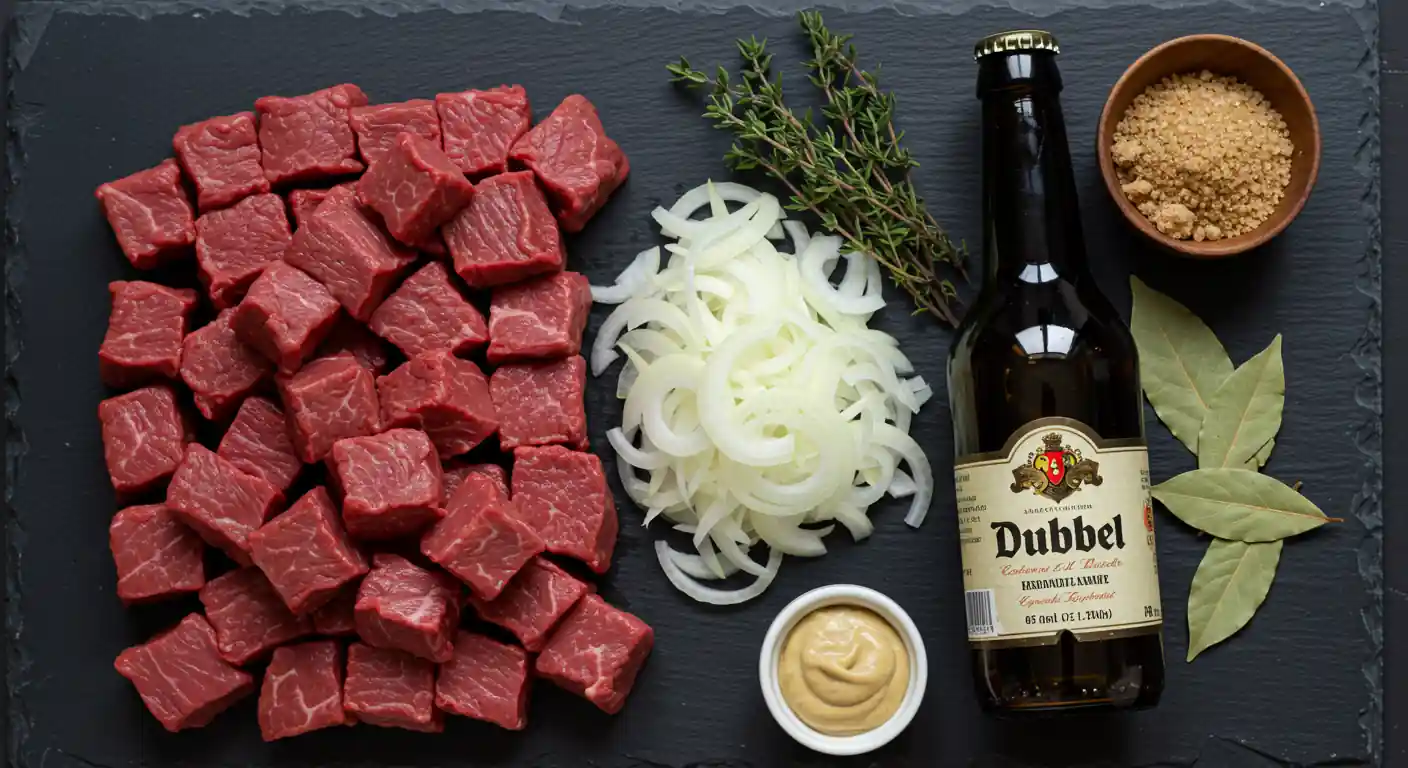
Gather these ingredients to create your own pot of Belgian magic. Don’t worry about finding exactly the specific Belgian regional items; good quality substitutes work wonderfully.
For the Stew:
- Beef: 2.5 – 3 lbs (about 1.2 – 1.4 kg) Boneless Beef Chuck Roast, cut into 1.5 to 2-inch cubes. (Avoid pre-cut stew meat if possible; cutting your own ensures better quality and size consistency).
- Onions: 3 large Yellow Onions, thinly sliced (about 4-5 cups sliced). Yes, it seems like a lot, but they cook down!
- Bacon: 4-6 slices Thick-Cut Bacon, chopped (optional, but adds amazing flavor).
- All-Purpose Flour: 1/4 cup (for dredging the beef).
- Butter: 2 tablespoons.
- Vegetable Oil: 2 tablespoons (or any neutral high-heat oil).
- Garlic: 3-4 cloves, minced.
For the Flavorful Braising Liquid:
- Belgian-Style Beer: 2 x 12 oz bottles (about 750 ml total) of Dark Belgian Ale (Dubbel, Quadruple, or a strong Brown Ale are excellent choices). Avoid anything too hoppy or bitter (like an IPA). If you can’t find Belgian beer, a good quality, malty dark ale or even a stout can work.
- Beef Broth: 1.5 – 2 cups Low-Sodium Beef Broth or Stock.
- Brown Sugar: 2 tablespoons, packed (light or dark). Traditionally, sirop de Liège (a fruit syrup) or crumbled gingerbread (pain d’épices) is used for sweetness – feel free to substitute if you can find them!
- Dijon Mustard: 2 tablespoons (Grainy or smooth works).
- Apple Cider Vinegar: 1 tablespoon (or red wine vinegar).
- Tomato Paste: 1 tablespoon.
Herbs and Seasonings:
- Fresh Thyme: 4-5 sprigs (or 1 teaspoon dried thyme).
- Bay Leaves: 2.
- Salt: To taste (start with 1.5 teaspoons).
- Black Pepper: Freshly ground, to taste (start with 1 teaspoon).
- Optional Garnish: Fresh parsley, chopped.
Step-by-Step Instructions: Making Perfect Carbonade Flamande
Let’s get cooking! This process involves a few key stages: browning, sautéing, deglazing, and simmering.
1. Prepare the Ingredients (Mise en Place)
- Beef: Pat the beef cubes completely dry with paper towels. This is crucial for getting a good sear. Season them generously with about 1 teaspoon of salt and 1/2 teaspoon of black pepper. Place the 1/4 cup of flour in a shallow dish or plate and dredge the beef cubes, shaking off any excess flour.
- Onions & Garlic: Slice the onions and mince the garlic.
- Bacon: If using, chop the bacon.
- Herbs: If using fresh thyme, have the sprigs ready.
2. Brown the Beef (Building Flavor Foundation)
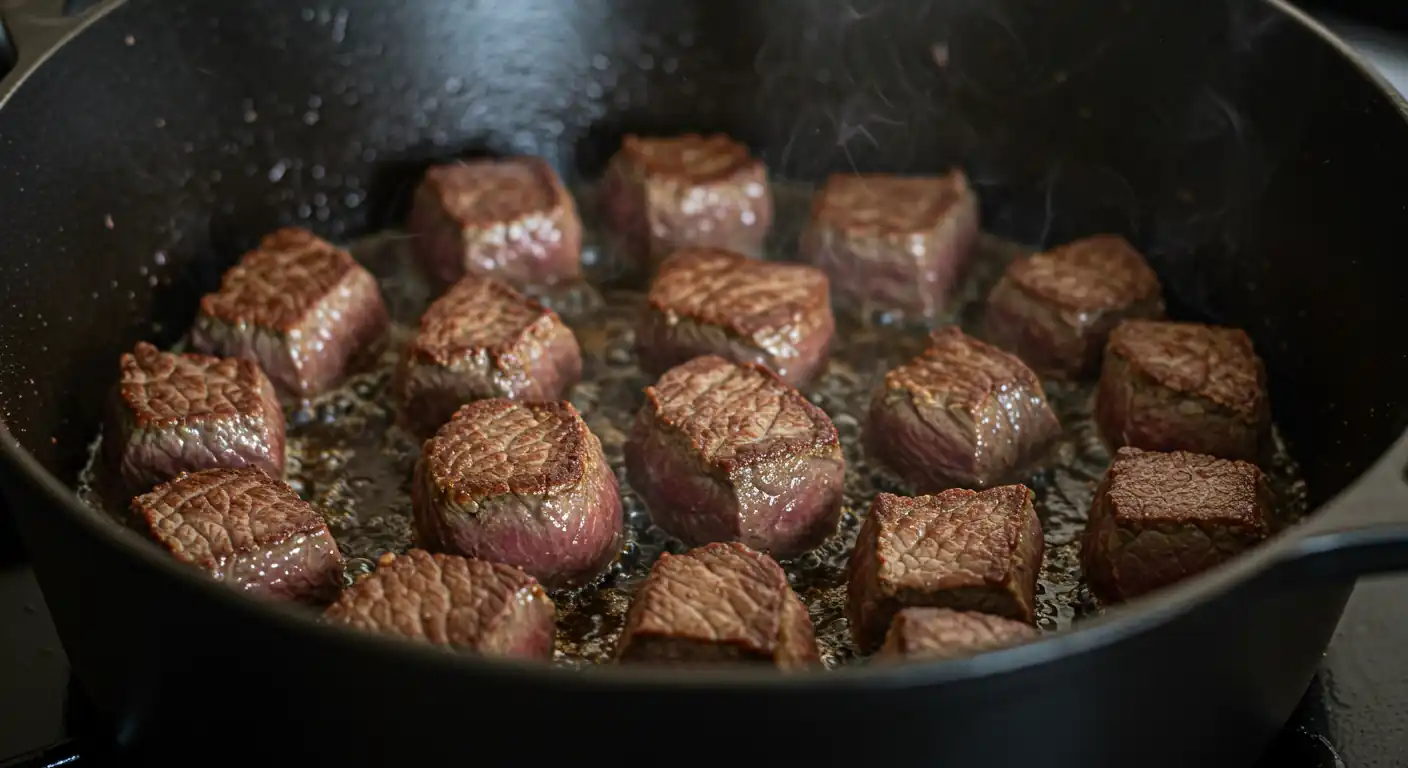
- Cook Bacon (Optional): In a large, heavy-bottomed pot or Dutch oven, cook the chopped bacon over medium heat until crispy. Remove the bacon with a slotted spoon, leaving the rendered fat in the pot. Set the crispy bacon aside for later (or snacking!).
- Sear the Beef: Add the butter and vegetable oil to the bacon fat (or just use butter and oil if not using bacon). Increase the heat to medium-high. Once the fat is shimmering hot, add the floured beef cubes in a single layer, being careful not to overcrowd the pot (work in batches if necessary). Sear the beef on all sides until deeply browned. This step is vital for developing rich flavor! Don’t rush it. Transfer the browned beef to a separate plate or bowl.
3. Sauté the Aromatics
- Cook Onions: Reduce the heat to medium. Add the sliced onions to the pot. There should be enough fat left; add a touch more oil or butter if needed. Cook the onions slowly, stirring occasionally, for about 10-15 minutes, until they are very soft, translucent, and lightly golden. Scrape up any browned bits (fond) from the bottom of the pot as the onions release moisture – this is pure flavor!
- Add Garlic & Tomato Paste: Add the minced garlic and tomato paste to the onions. Cook for another 1-2 minutes, stirring constantly, until the garlic is fragrant and the tomato paste darkens slightly.
4. Deglaze and Build the Braising Liquid
- Deglaze with Beer: Pour in about half of one bottle of beer. Bring it to a simmer, scraping the bottom of the pot vigorously with a wooden spoon to release all those flavorful browned bits stuck to the bottom. Let it bubble for a minute or two.
- Add Remaining Liquids & Flavorings: Stir in the rest of the beer, the beef broth, brown sugar, Dijon mustard, and apple cider vinegar. Mix well.
5. Simmering the Carbonade Flamande to Perfection
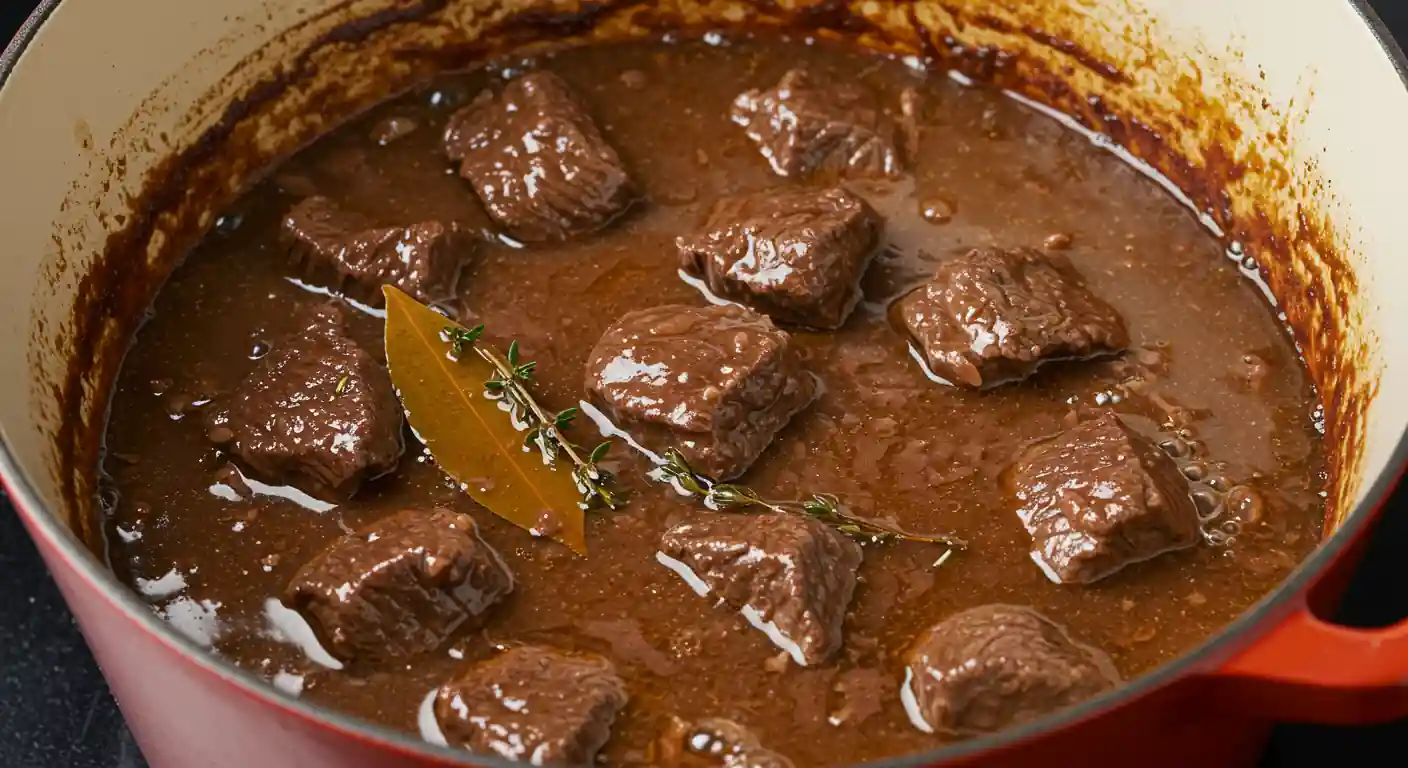
- Return Beef & Add Herbs: Return the browned beef (and any accumulated juices) to the pot. Add the fresh thyme sprigs and bay leaves. Stir everything together. The liquid should almost cover the beef; add a little more broth if needed.
- Bring to a Simmer: Bring the stew just to a gentle simmer on the stovetop.
- Slow Cook: Once simmering, you have two main options:
- Oven Method (Recommended): Preheat your oven to 325°F (160°C). Cover the pot tightly with its lid and transfer it to the preheated oven. Cook for 2.5 to 3.5 hours, or until the beef is exceptionally tender and easily shreds with a fork. Check occasionally after the 2-hour mark.
- Stovetop Method: Keep the pot on the stovetop over very low heat. Cover tightly and let it simmer gently for 2.5 to 3.5 hours, stirring occasionally to prevent sticking. Ensure it’s barely bubbling, not boiling rapidly. You might need to add a splash more broth if it reduces too much.
- Check for Tenderness: After about 2.5 hours, test a piece of beef. If it’s not fall-apart tender, continue cooking, checking every 30 minutes.
6. Finishing Touches
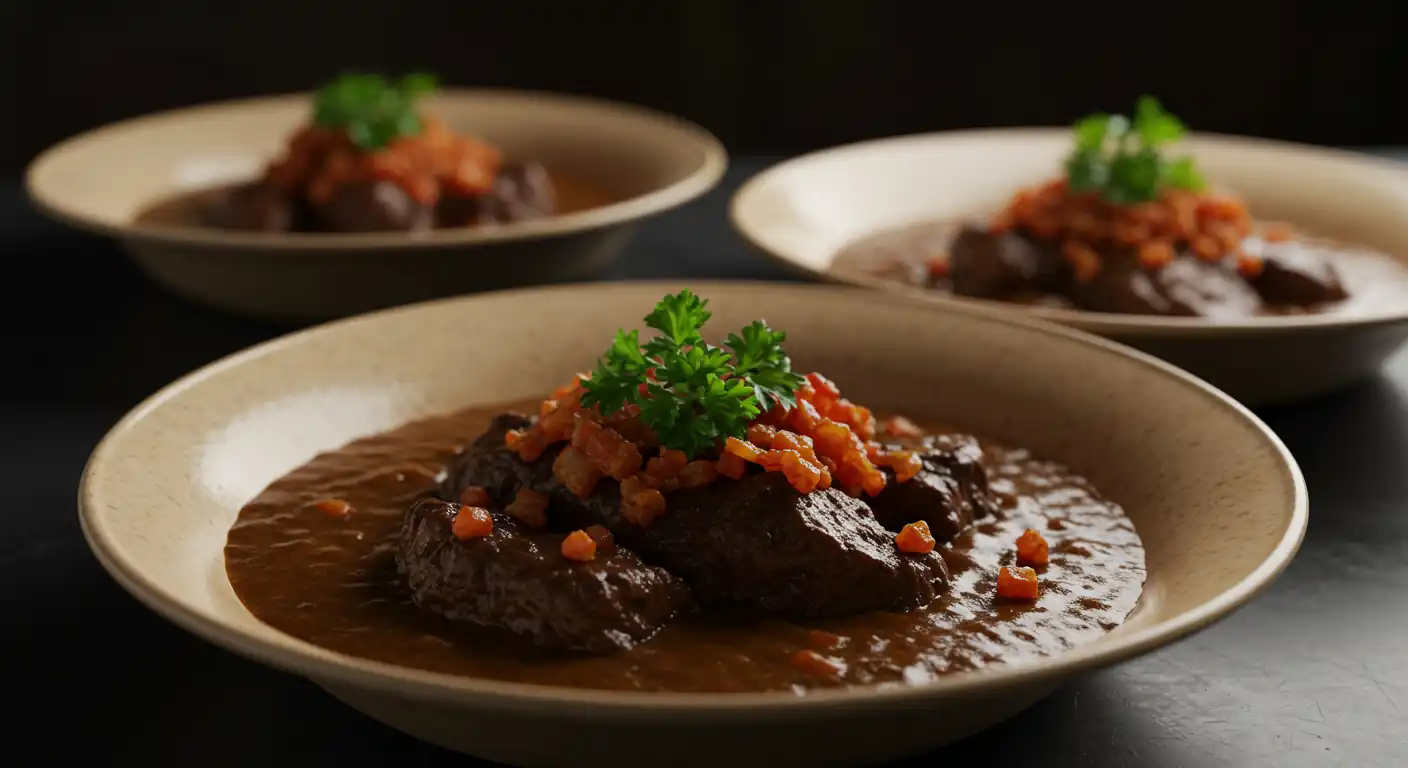
- Remove Herbs: Once the beef is perfectly tender, carefully remove the thyme sprigs and bay leaves from the Carbonade Flamande.
- Adjust Seasoning & Consistency: Taste the gravy. Adjust seasoning with more salt, pepper, or even a tiny bit more brown sugar or vinegar to balance the flavors to your liking. If the gravy seems too thin for your preference, you can thicken it slightly. Mix 1 tablespoon of cornstarch with 2 tablespoons of cold water to make a slurry, then stir it into the simmering stew until thickened. Alternatively, remove the lid and simmer gently on the stovetop for 10-15 minutes to reduce and thicken the sauce naturally.
- Rest: Let the stew rest off the heat for about 10-15 minutes before serving. This allows the flavors to meld even further.
- Serve: Ladle the glorious Carbonade Flamande into bowls. Garnish with fresh chopped parsley and the reserved crispy bacon bits, if desired.
Tips for the Absolute Best Carbonade Flamande
- Choosing the Beef: Chuck roast is ideal due to its fat content and connective tissue, which break down beautifully during slow cooking, making the meat tender and enriching the sauce. Brisket or boneless short ribs can also work.
- The Beer Matters: Use a beer you enjoy drinking! A Belgian Dubbel (like Chimay Red, St. Bernardus Prior 8) or a Brown Ale (like Newcastle, though a Belgian one is better) provides the classic malty, slightly sweet profile. Avoid very bitter IPAs or overly light lagers.
- Don’t Skip the Browning: Properly searing the beef creates the Maillard reaction, which builds deep, complex flavors. Don’t overcrowd the pan, and aim for a dark brown crust.
- Low and Slow is Key: Resist the urge to rush the cooking process by increasing the heat. Gentle, slow simmering (whether in the oven or on the stovetop) is essential for tender beef and well-developed flavors. The oven generally provides more even, consistent heat.
- Embrace the Onions: The large quantity of onions melts down to provide sweetness and body to the sauce. Slice them relatively thinly for best results.
- Make Ahead Magic: Carbonade Flamande is fantastic made a day in advance. The flavors deepen and meld beautifully overnight. Simply reheat gently on the stovetop or in the oven.
What to Serve with Carbonade Flamande
Traditionally, Carbonade Flamande is served with Belgian frites (fries!) for dipping into that incredible gravy. It’s a classic and highly recommended pairing. Other wonderful options include:
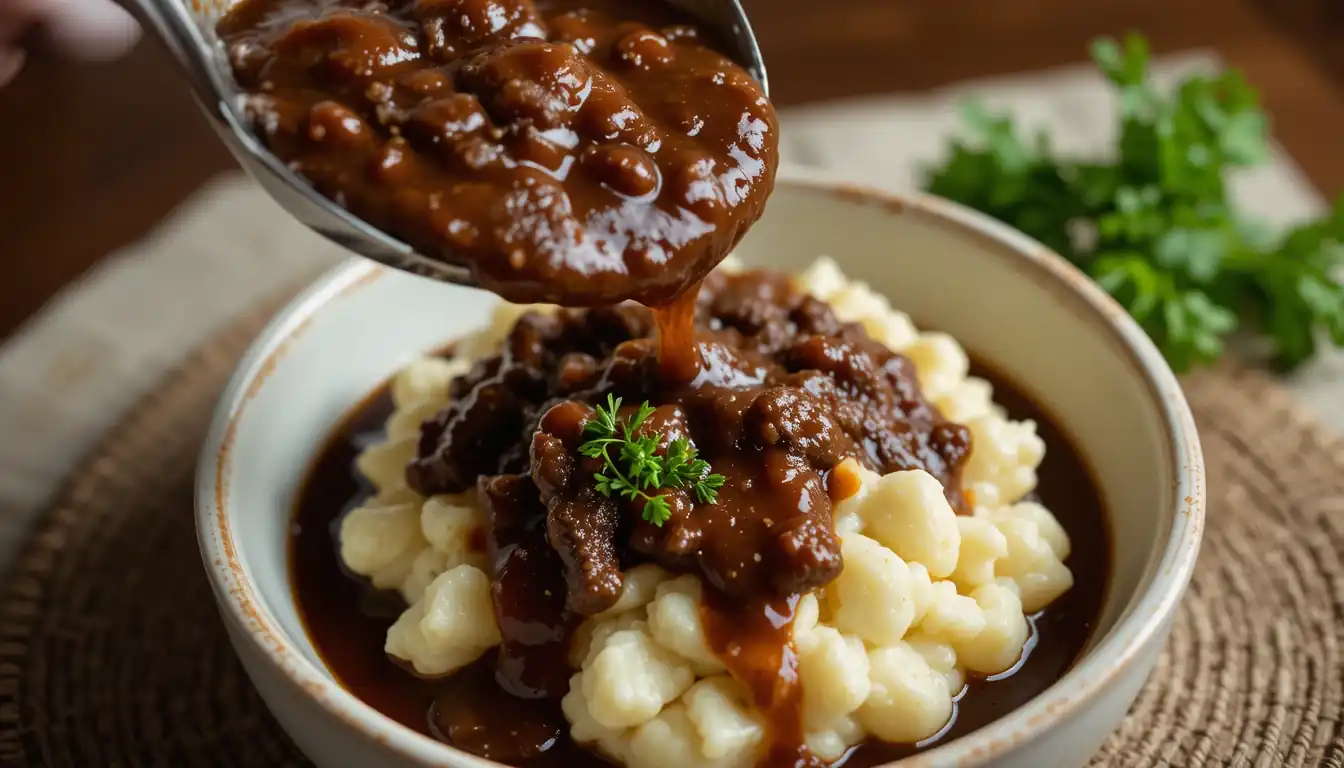
- Creamy Mashed Potatoes: Perfect for soaking up the sauce.
- Crusty Bread: Essential for mopping up every last drop of gravy. A good baguette or sourdough works well.
- Egg Noodles: Wide egg noodles provide a lovely base.
- Boiled Potatoes: Simple boiled or steamed potatoes are another traditional accompaniment.
- A Simple Green Salad: A lightly dressed green salad can offer a fresh counterpoint to the richness of the stew.
Storing and Reheating Your Stew
- Storage: Allow the Carbonade Flamande to cool completely before transferring it to an airtight container. Store it in the refrigerator for up to 3-4 days.
- Reheating: Reheat gently over low heat on the stovetop, stirring occasionally, until warmed through. You may need to add a splash of beef broth or water if the sauce has thickened too much upon cooling. Alternatively, reheat covered in a moderate oven (around 300°F / 150°C). Avoid boiling vigorously, which can toughen the meat.
Ready to Cook?
There you have it – a comprehensive guide to making truly delicious, authentic-tasting Carbonade Flamande. It’s more than just a beef stew; it’s a taste of Belgian tradition, a comforting embrace in a bowl, and a dish that’s sure to become a favorite in your home. Gather your ingredients, pour yourself a Belgian beer (one for the pot, one for the cook!), and enjoy the process of creating this wonderfully flavorful meal. Happy cooking!

